Latest News
The Sailors’ Bethel
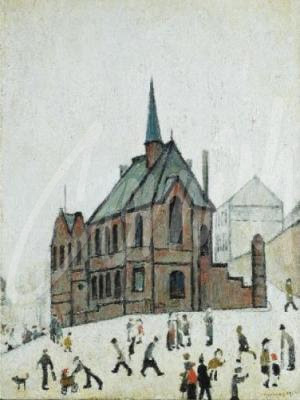
The Sailors’ Bethel opened in 1877 and can be seen at the Newcastle quayside. Bethel is Hebrew for ‘House of God’ and in the 130 years of its existence this building has served as a nonconformist chapel, a community centre, A Danish seamen’s church and more recently as offices.
In the late 19th century regular trade between Newcastle and Danish ports resulted in cargoes of butter, eggs, and fresh meat arriving at the mouth of the Ouseburn, and the Sailors’ Bethel was the ideal place for the Danish seamen to stay overnight whilst their cargo was unloaded.
During the 1960s the chapel became a subject of interest for both L.S. Lowry and Norman Cornish as contemporaries, exhibiting regularly at the Stone Gallery where Mick and Tilly Marsahll (owners of the gallery) acted as agents on behalf of both artists. Cornish used to visit the Stone Gallery at weekends and Lowry was a frequent visitor to the gallery although his accommodation was at the Seaburn Hotel near Sunderland. Both artists were active in and around Tyneside and the coast, deriving inspiration from people and places. Lowry painted his version of ‘Old Chapel’ in 1965 and the original is in the collection of the Laing Art Gallery. Lowry used his characteristic style, which he developed to suit the industrial and city subjects he generally painted, with a white background and limited palette of five colours: ivory black, vermillion, Prussian blue, yellow ochre and flake white.
Cornish first exhibited at the Laing Art Gallery in 1940 with his first portrait in oils, ‘My Sister Ella’. His version of the Sailors’ Bethel was only discovered in 2014 but was most likely produced during his journeys around Tyneside in the 60s.
Each version reflects the different styles and interpretation by both artists. With Cornish it is the rapid sketch capturing a moment in time using his Flo-master pen with watercolour added to the final version. With Lowry it was the attraction of the unusual architecture of the building. Similar subjects engaged both artists at different times in the Tyneside area, including All Saints church in Newcastle and the Groyne and Pier at South Shields.
According to Lowry, he generally invented the figures in his pictures. Cornish’s sketchbooks contain dozens of observations of people in different settings who often appear at a later stage in his paintings. 30 of Cornish’s drawings and paintings, inspired by locations in Newcastle and the pier at South Shields, feature significantly in Behind The Scenes: The Norman Cornish Sketchbooks which may be purchased at www.normancornish.com
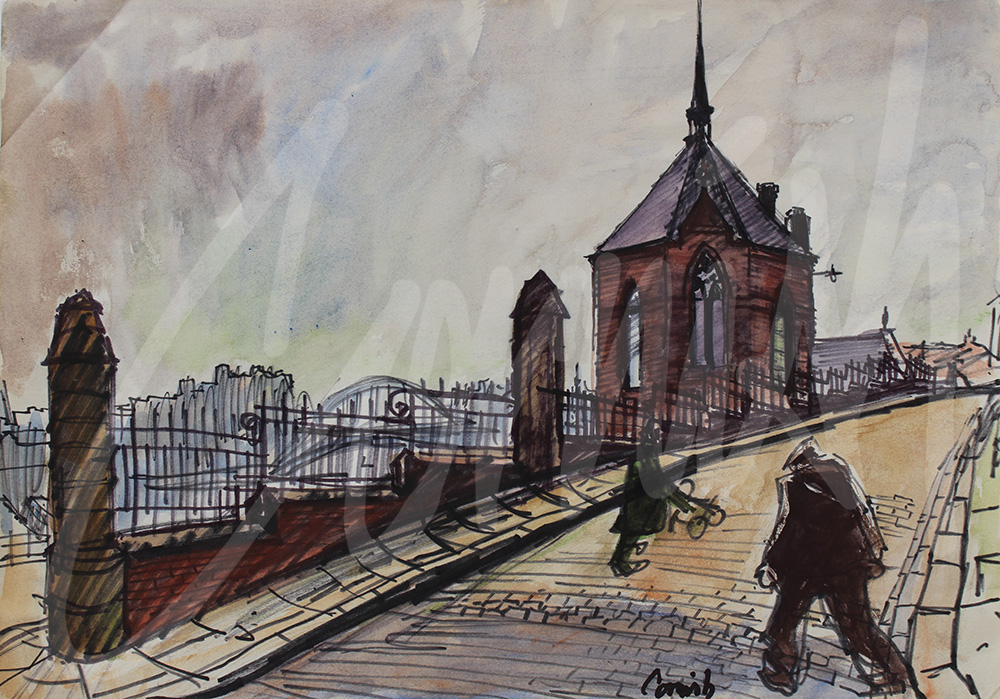
Books – The Other Channel
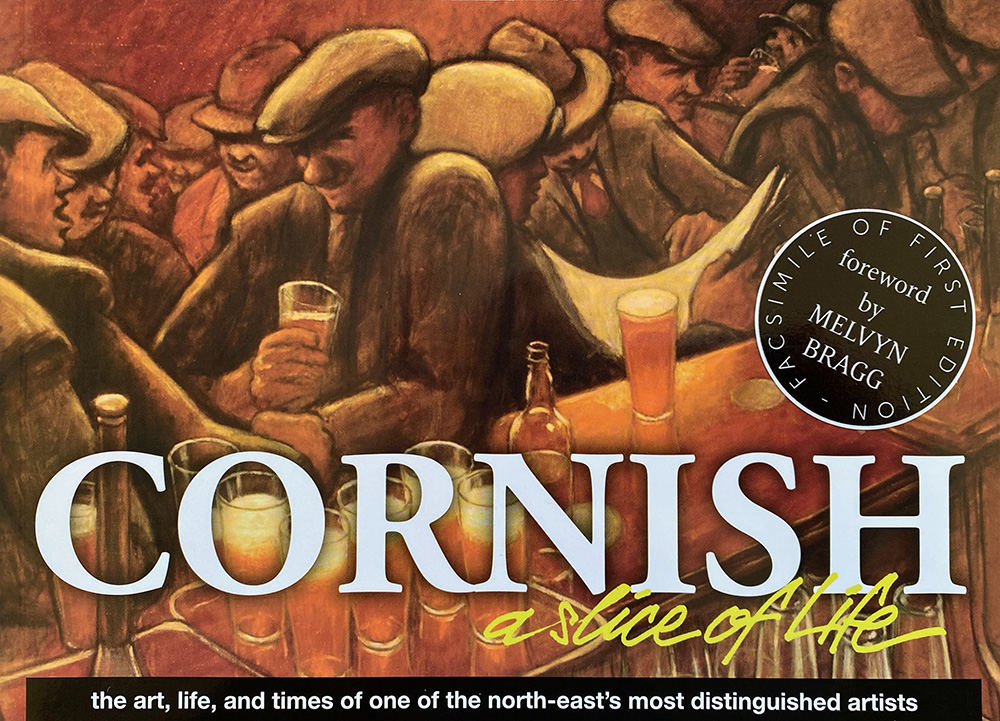
One of the hallmarks of eminent artists and other famous people is that their life and work begins to appear in books. This began in 1989 for Cornish when his autobiography ‘A Slice of Life’ was published by Mallabar Contemporary Arts and included a Foreword by Melvyn Bragg. Second and third editions were published in 2006 and 2015 by Northumbria University, although the original images were not included in these abridged editions.
Cornish in Spennymoor was published in 1999 by Northumbria University and it included an introduction by Michael Chaplin. A selection of the drawings, sketches and reminiscences of Norman Cornish.
‘Paintings, Drawings and Sketches’ was published in 2005 by Northumbria University and included a collection of images and an essay by William Varley.
‘The Quintessential Cornish’ was published in 2009 by Gemini Productions. The Life and Work of Norman Cornish . A biography of Norman Cornish by Robert McManners and Gillian Wales.
‘A Shot Against Time’ was jointly published in 2010 by Northumbria University Gallery and Kings Place Gallery, London. It included a collection of images and essays by William Varley, Michael Chaplin, William Feaver and Dr Gail-Nina Anderson.
‘The Lost World of Norman Cornish’ was published in 2010 by Northumbria University Gallery. It was a collection of images and an essay by William Varley.
‘Behind The Scenes :The Norman Cornish Sketchbooks’ was published in September 2017 by Norman Cornish Ltd.
A facsimile edition of ‘A Slice of Life’ was published recently by Norman Cornish Ltd and featured across the region in The Northern Echo and County Durham Advertiser.
Over time, books which are no longer available acquire a life of their own via the internet and good quality second hand book stores. Their value also increases and several years ago an original signed copy of ‘A Slice of Life’ was in a shop in Leicester for a four figure sum.
A new book about Cornish and the stories and anecdotes about his life and work is currently under development for publication later this year. It is titled ‘The Test of Time,’ and will include many previously unseen images…… to be continued.
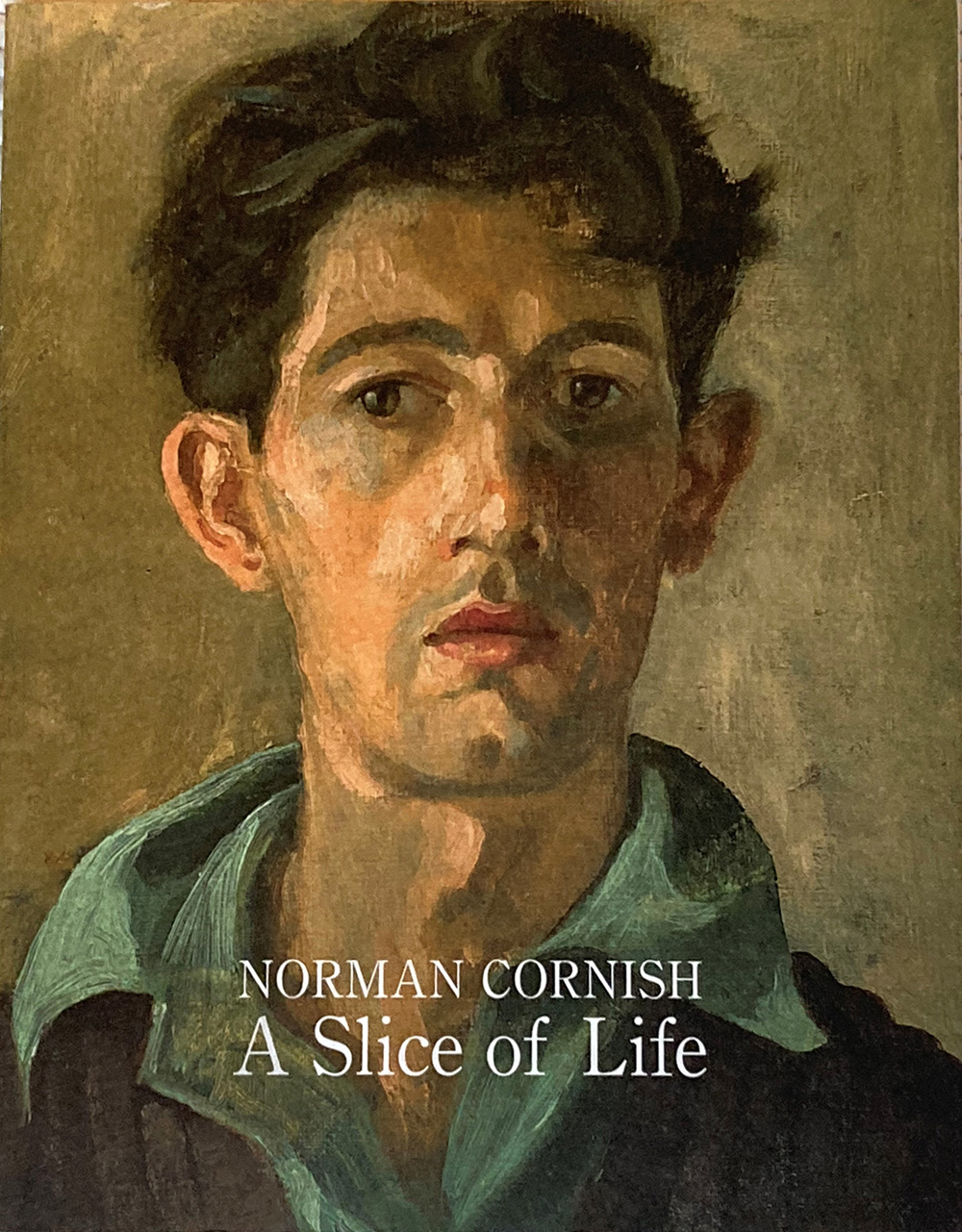
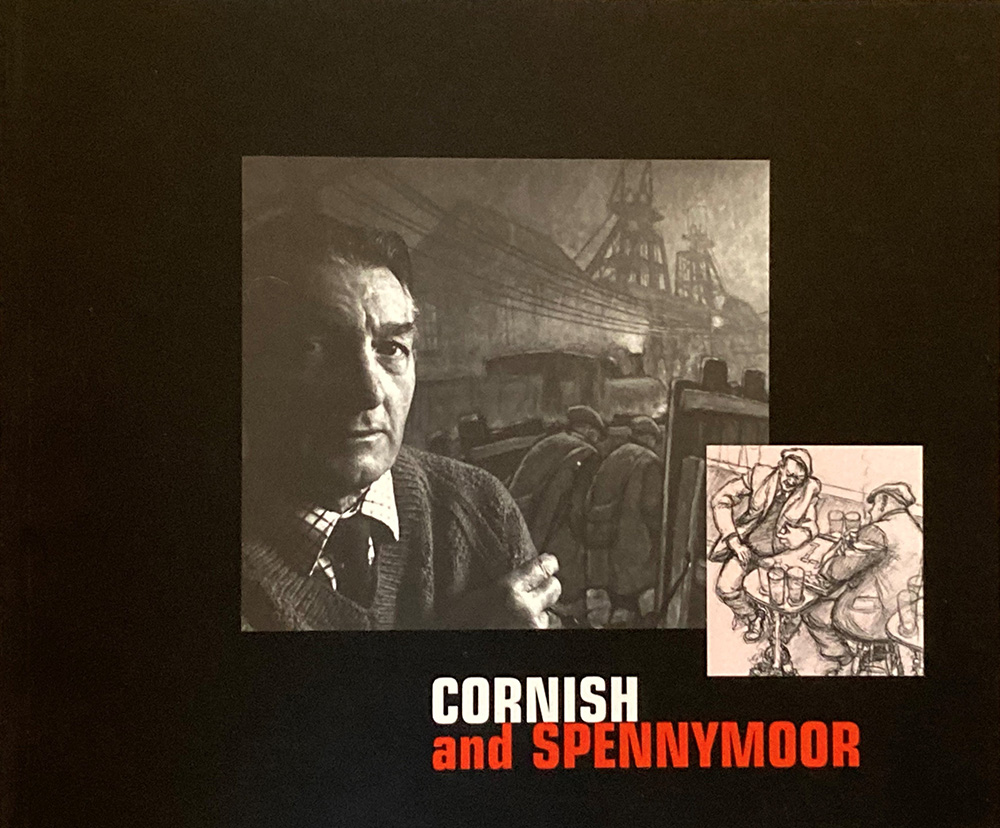
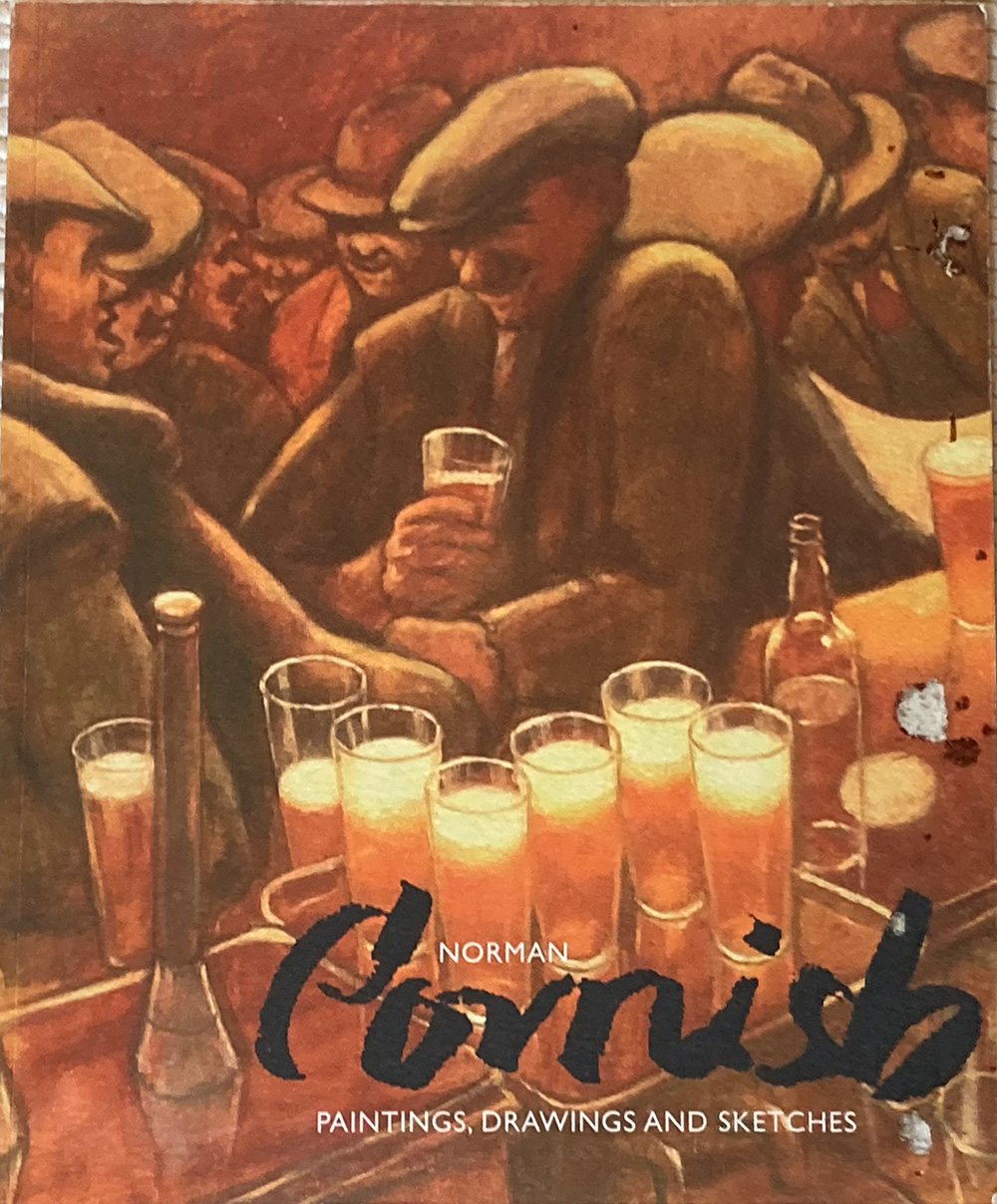
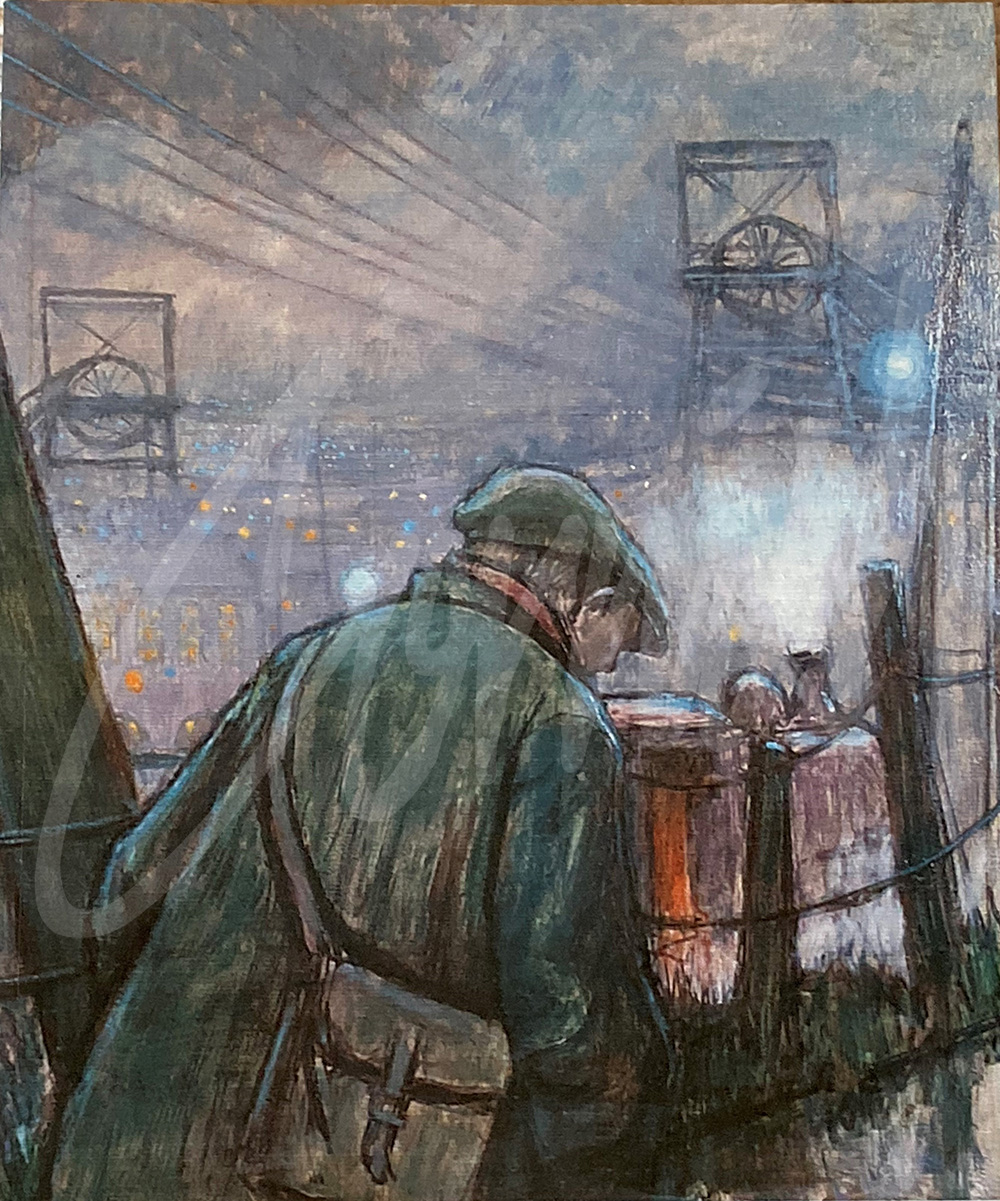
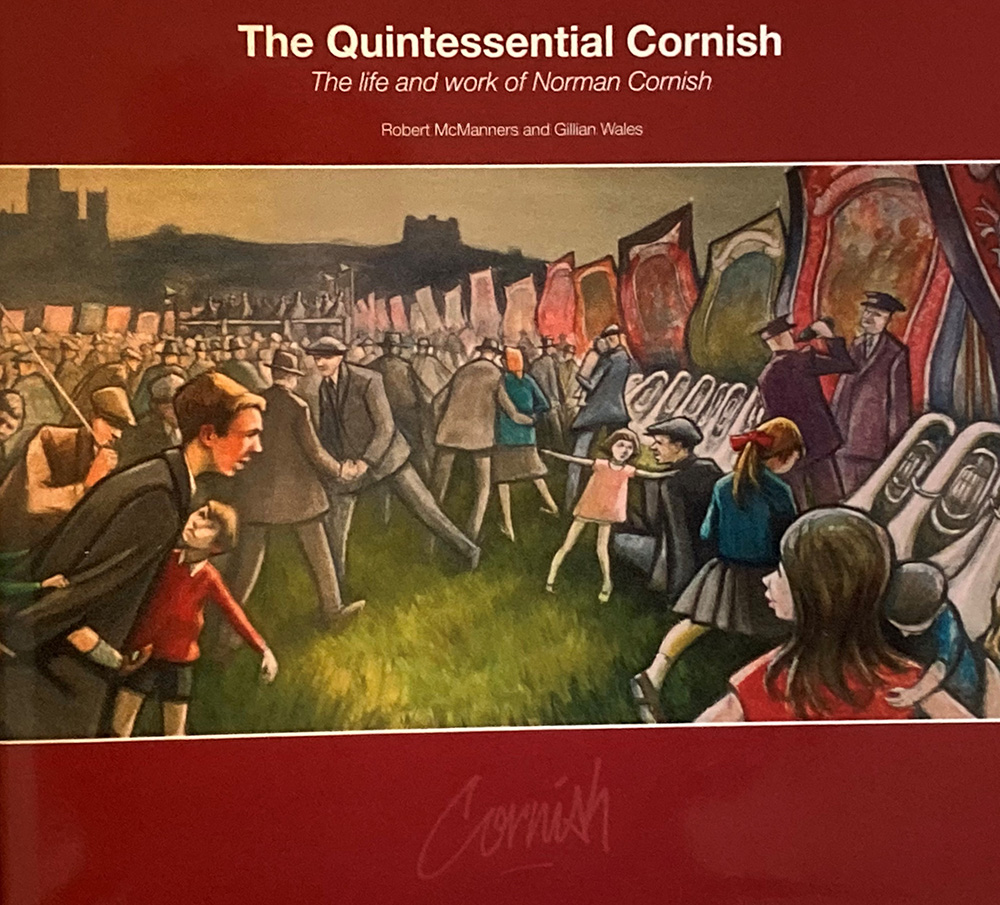
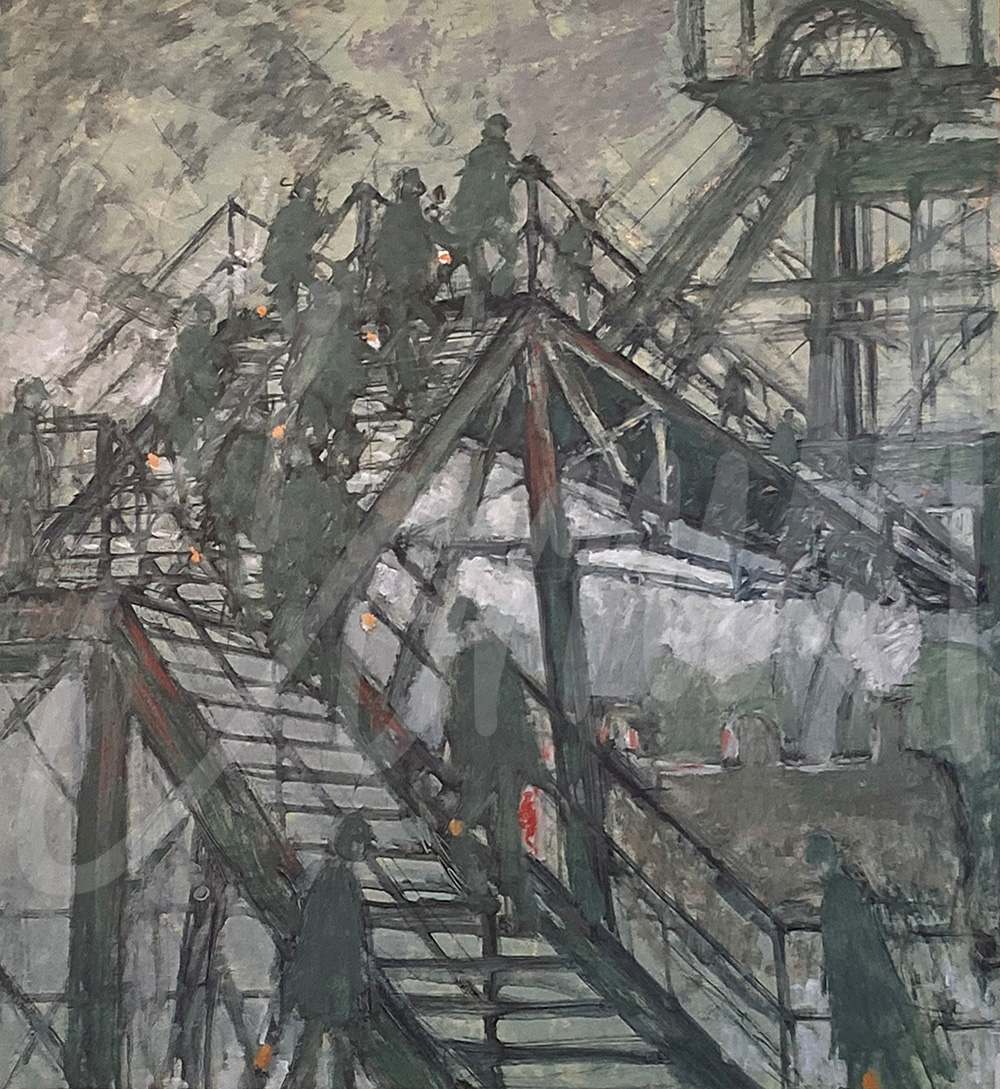
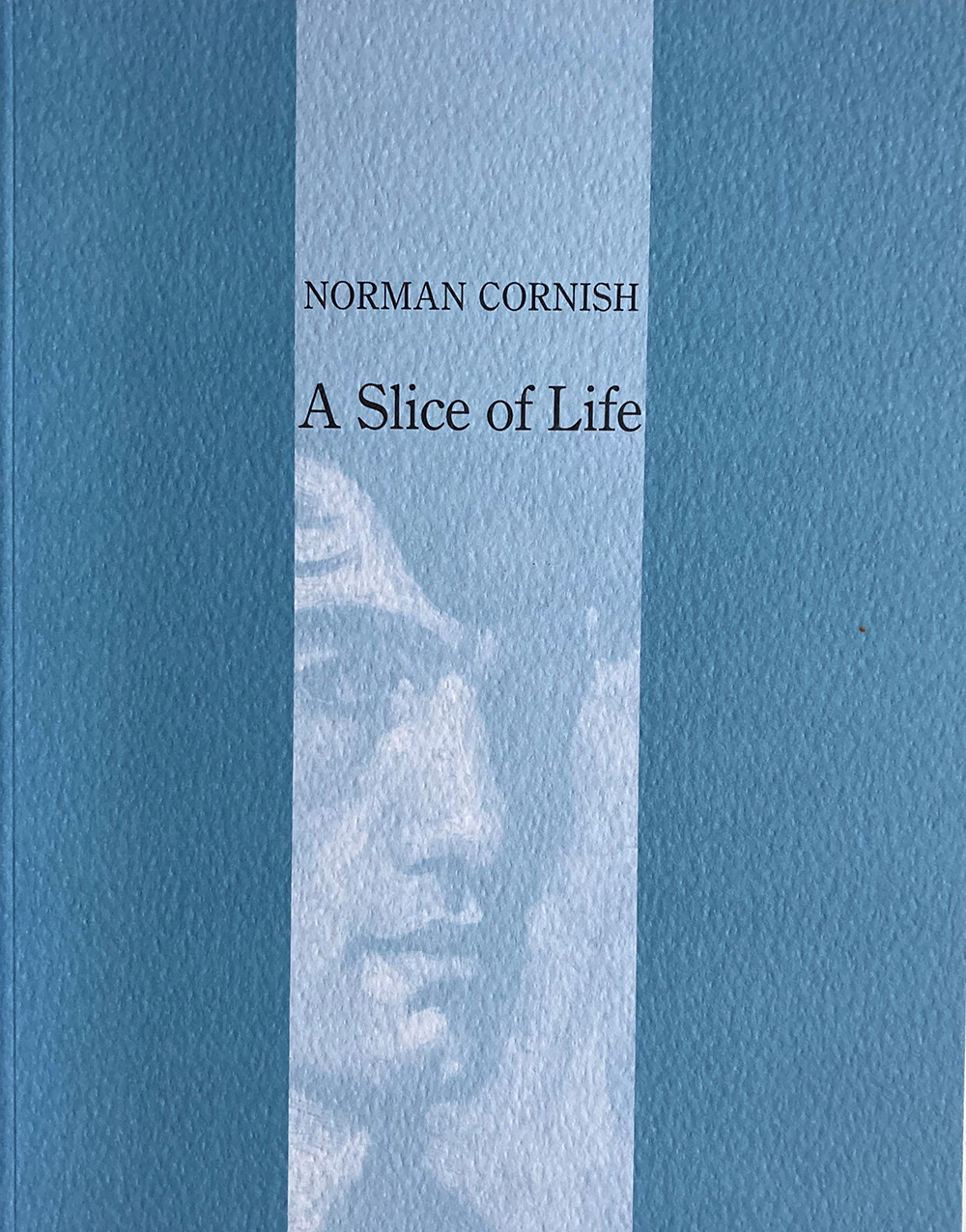
A Christmas Message
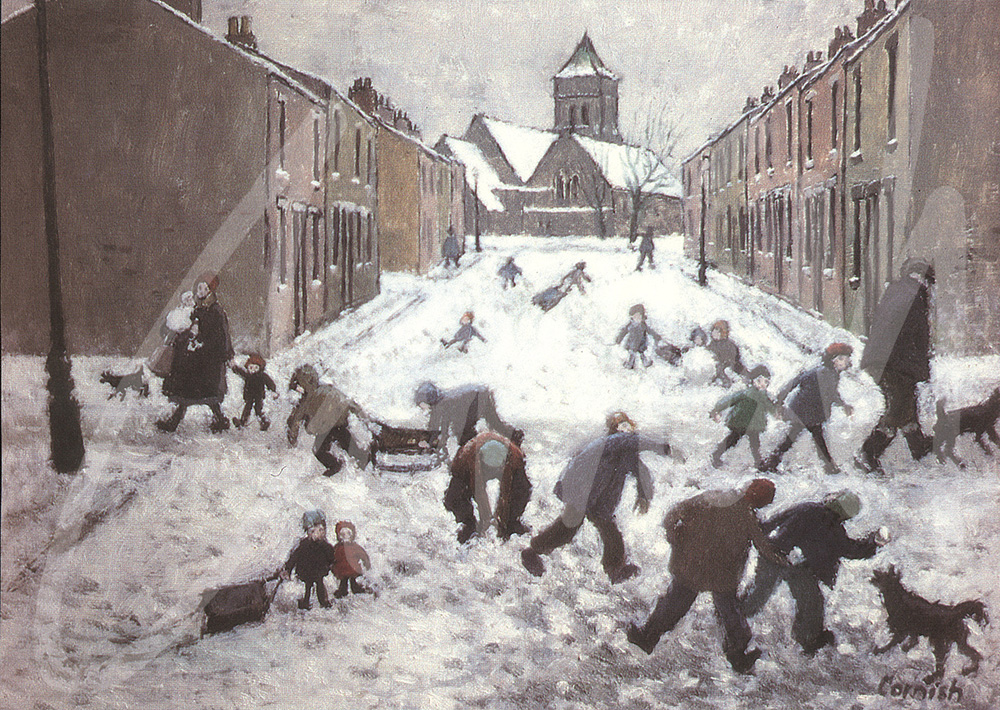
Many visitors to the website and facebook followers have commented about how much they have enjoyed the weekly features which have taken readers behind the scenes and perhaps revealed more about Norman Cornish and his fascinating, yet challenging, journey from miner to professional artist. There will be more interesting articles from the archive to be published during 2023 along with some emerging projects.
‘Edward Street in Snow’ is an excellent example of a popular location that was a personal favourite of Cornish. This was from a time when snow and winter conditions were fairly reliable and the natural slope of the street made it a great place for ‘slides’, snowball fights, sledging and making snowmen. The children also had a lot of fun!
89 years ago the young Norman Cornish started work on Boxing Day, aged 14, at Dean and Chapter Colliery. Times were hard and there was widespread poverty. Twelve months ago we reflected about the unprecedented global circumstances which have created challenges for all of us, but once again the enduring flame of mutual support, community spirit and kindness hopefully will see us through.
At some point we will look back and be relieved that life has continued….. just as it did for the young Norman Cornish in 1933. We would like to thank you for your continuing support and interest in the life and times of Norman Cornish – Wherever you live in the UK and to our readers in other parts of the world.
Best wishes to you, your family and friends from
Ann and Mike Thornton, Dorothy and John Cornish
Compliments of the season
Next post on January 9th 2023
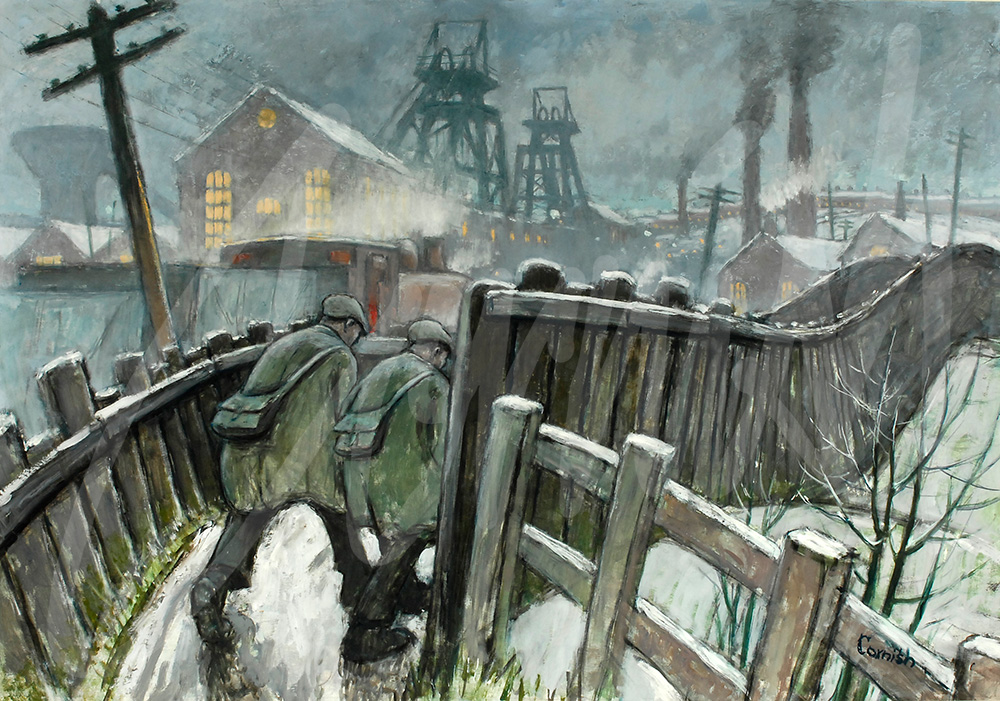
An Interesting Visitor
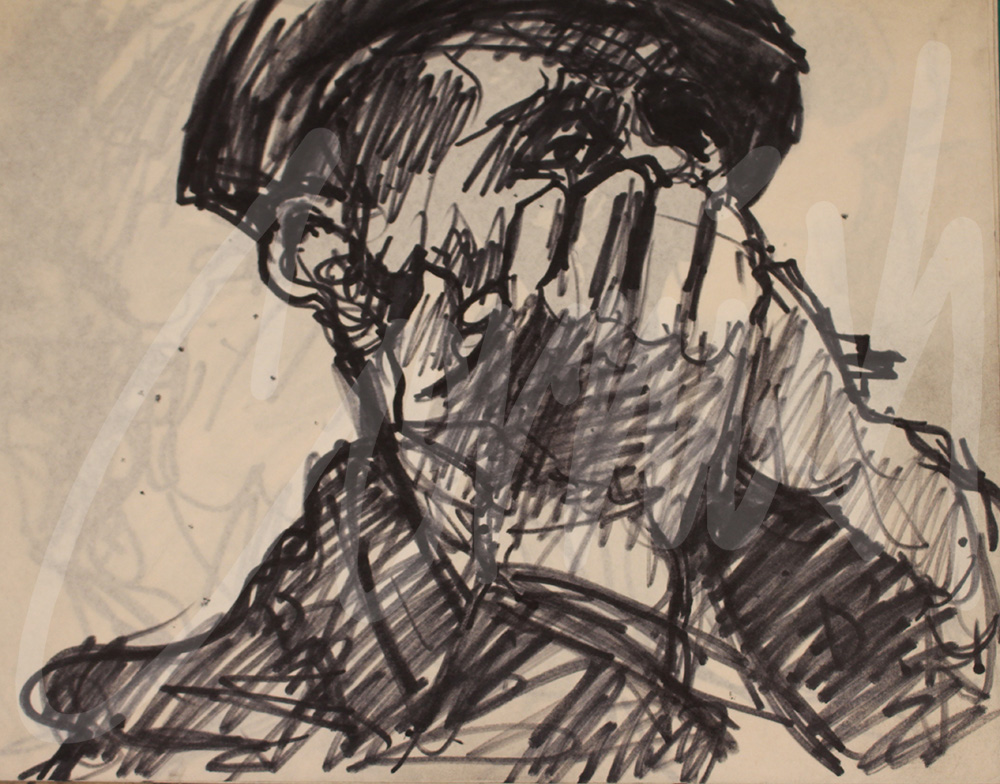
Throughout his life, Cornish enjoyed exposure to a variety of musical experiences. Some families owned pianos and accordions, and there were colliery brass bands associated with most coal mines. The standard of musicianship was very high. His wife Sarah was also immersed in music and her grandfather was a Cornet player and founder member of the Blackhall Colliery Band. Music performed in pubs often appeared in some of his drawings and he was an accomplished Banjo player.
Both Norman and Sarah enjoyed listening to music at home via their extensive collection of classical music (vinyl records) and they had a shared interest in opera. Although he had no interest in popular music Cornish nevertheless declared on one occasion his admiration for ‘Stranger On The Shore’ by Acker Bilk (1961) possibly identifying with the sentiment of the title. One day in 1969 a visitor arrived at the family home unannounced and a fascinating story was recalled some time later in his archive of afterthoughts. In his own words:
The doorbell rang and I went to open the door to find a rather tired looking man who asked me if this was Norman Cornish’s house. I invited him in, whereupon he informed me that a friend of his on Tyneside owned a drawing of mine and that he would very much like to buy one for himself. My wife Sarah went off to make him a cup of tea and sandwiches, as he seemed to need them. He then informed me that he was a musician. At this, I wondered what instrument he played and I was a bit ashamed to say that I wondered if he played piano in a local pub or something like that.
He then said that he played fiddle and asked if he could bring his violin into the house as it was valuable. On stepping outside, I discovered that he had an MG Midget sports car parked and he lifted a violin case from it. He said that he had been worried to leave it outside as he had worked extremely hard to buy it. Jokingly, I asked if it was a Stradivarius. He replied that it wasn’t but was equally valuable and was from Tudor times. Although it was old, he assured me that it played beautifully. To me, it looked like an old cricket bat. However, he played it a little and it sounded wonderful. I was intrigued by this man.
Anyway, he bought a drawing and off he went. A day or two later, a letter arrived containing a brochure about the ‘Aeolian Quartet’ outlining its success in major cities of the world. He had included a humble little note saying: Just to let you know what we do. This man’s name was Raymond Keenleyside and he was a violinist with the Aeolian Quartet which was generally considered one of the world’s best quartets. It was quite something to think that this man had actually played violin in our house.’
By a strange twist of fate, on the evening of August 1st 2014, just before Cornish passed away – ‘Stranger On The Shore,’ by Acker Bilk, was broadcast on BBC Radio 2.
Ray Keenleyside also accompanied Paul McCartney in 1993 ‘Give My Regards to Broad Street’ a solo studio album and film soundtrack.
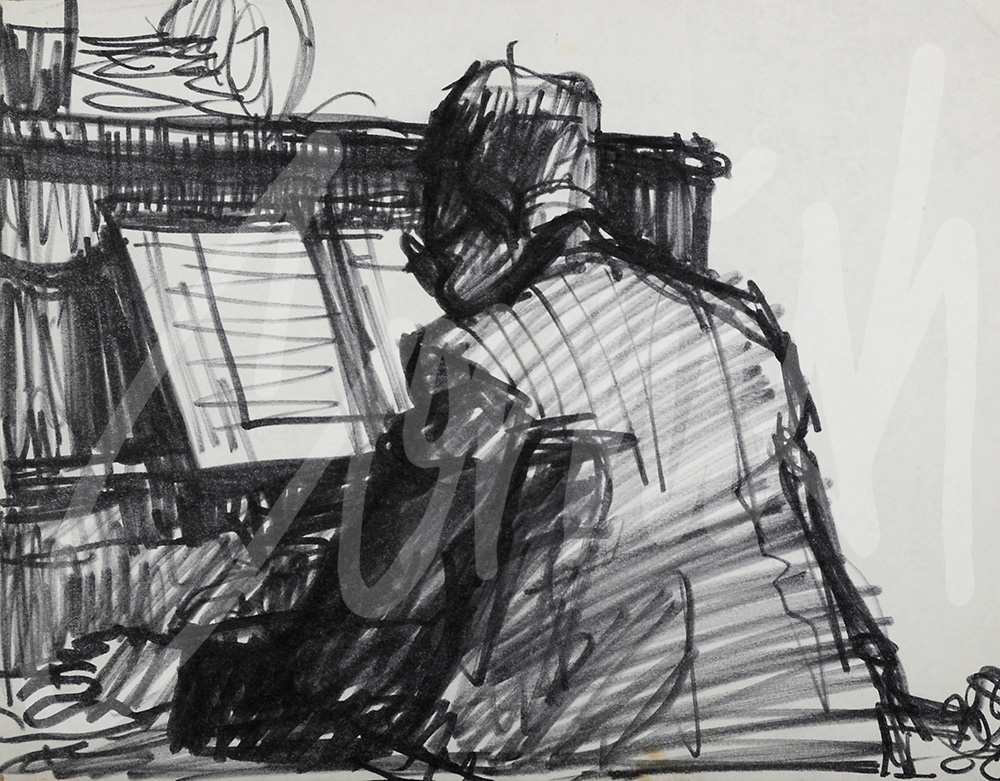
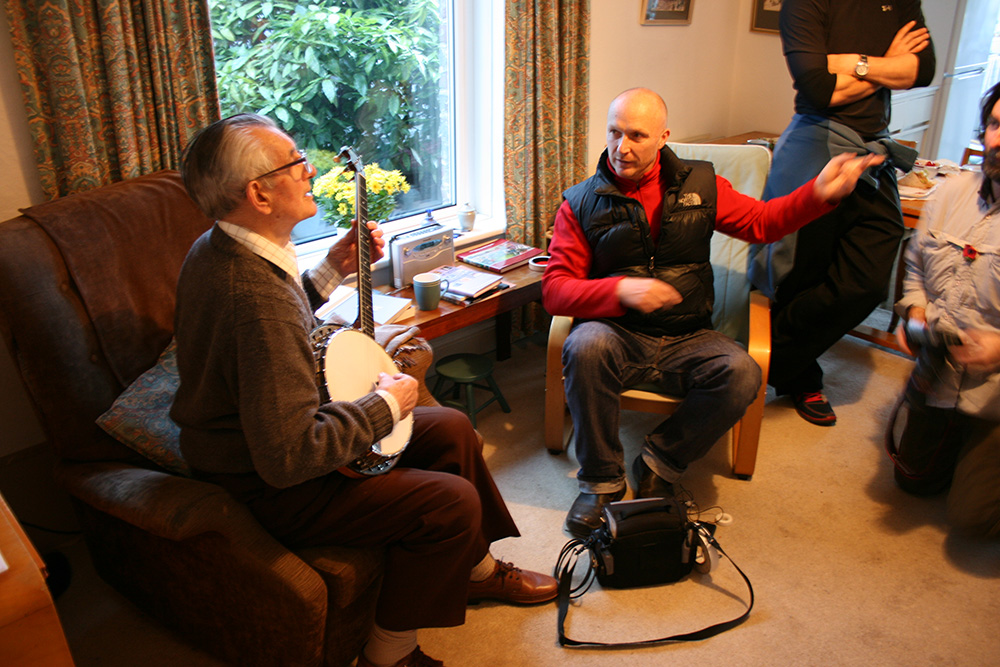
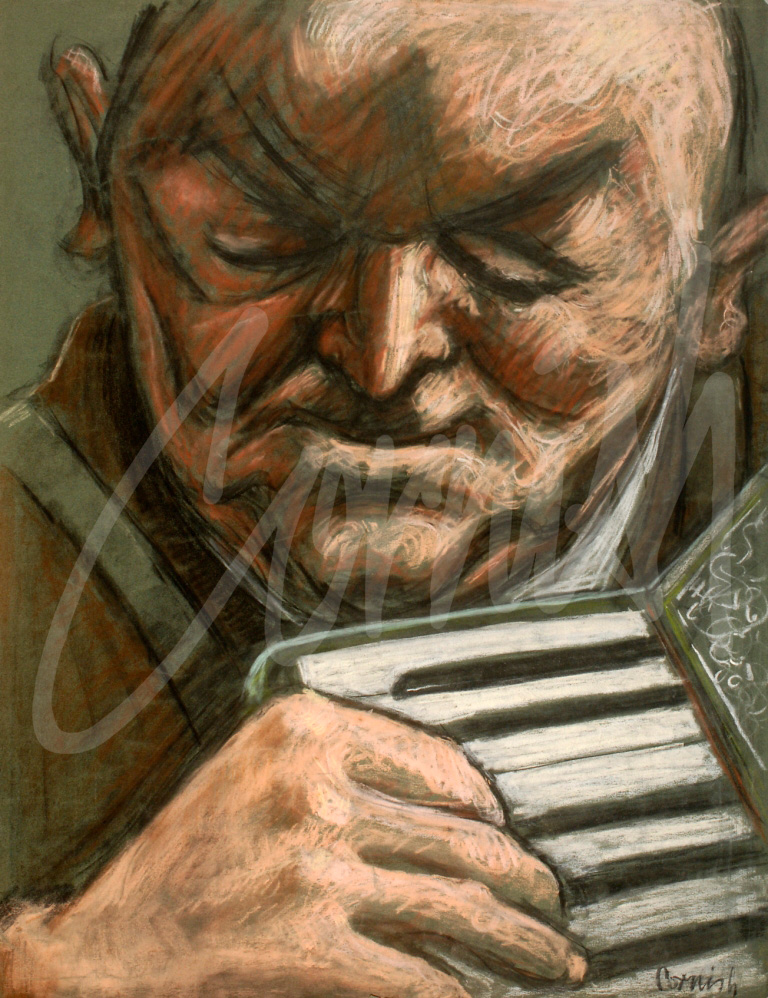
Painting in Oils
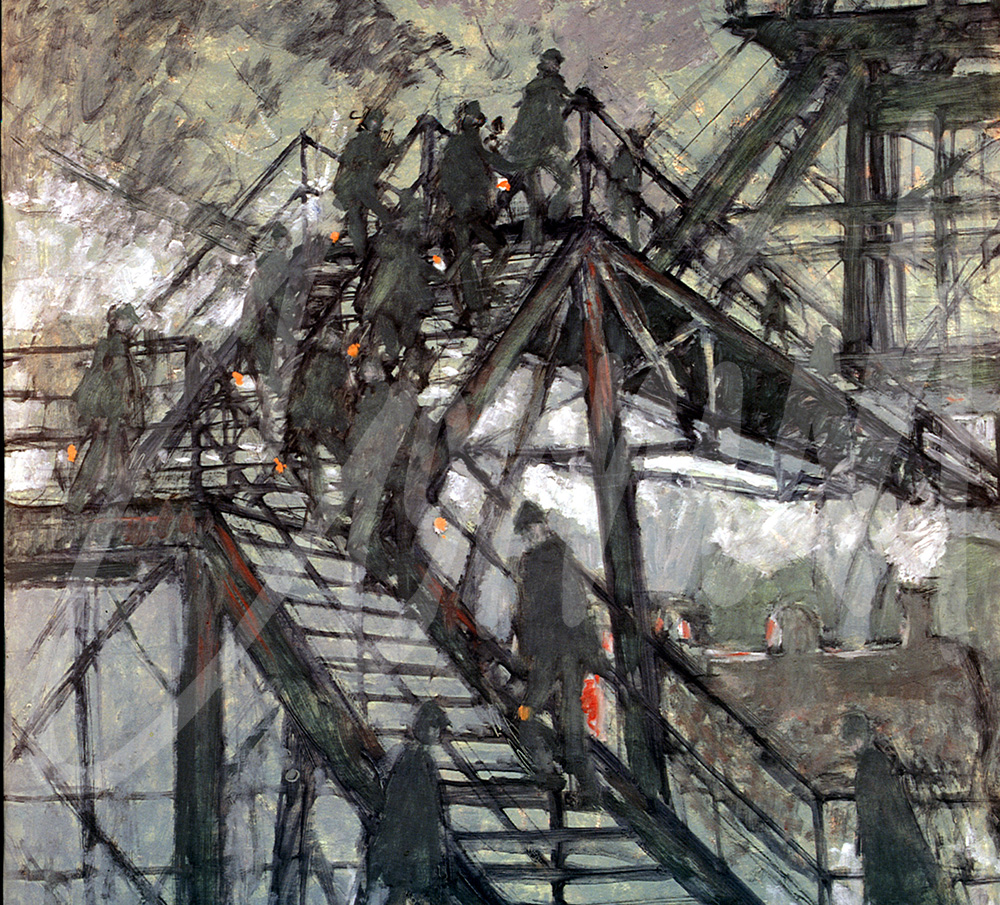
Cornish’s early work included pencil drawings and watercolours as he gained invaluable experience en plein air with the members of The Spennymoor Settlement Sketching Club. This approach enabled the artists to work outdoors and remove any visual limitations experienced working indoors.
The cost of materials to broaden the experience of the members of the Sketching Club was often prohibitive. However, as their reputations grew across the region via the annual exhibitions, an enthusiastic admirer of Cornish’s work donated 10 Guineas to Bill Farrell, Warden of The Settlement, to purchase oil paints for the benefit of the members of Sketching Club. The benefactor was Mrs. H.C. Baker- Baker, of Elemore Hall, County Durham: ‘a charming, gentle, cultured woman and a good friend of the Spennymoor Settlement.’
Suddenly, a new dimension to Cornish’s early work was enabled via this philanthropic gesture and Cornish was quick to respond with his first oil painting, a study of ‘My Sister Ella.’ This was painted over several days in his parent’s bedroom and exhibited in 1940: ‘Works of Artists of the Northern Counties annual exhibition’ in the Laing Art Gallery, Newcastle, often referred to as the ‘Royal Academy of the North.’
Painting in oils was a huge step forward for the young Cornish and an approach which required a new technique as well as additional materials such as canvas, stretchers, brushes, oil paints in tubes, palette knives, primer (first coat of paint on the canvas),and turps for cleaning. Together these materials emitted an unpleasant odour and a supportive wife was essential!
A regional newspaper article in 1960 referred to Sarah Cornish as an understanding woman who is dedicated to her home, husband and family. Sarah Cornish is essentially patient and sympathetic, otherwise she would not tolerate the paint splashed wallpaper, the brushes, canvasses and sketches amongst cosmetics on her dressing table.
The acquisition of the materials to work in oils and the opportunity to develop this aspect of his work began to exert a profound influence upon his development as an artist. A whole new dimension to his subjects and their visual interpretation emerged as his career developed in the post war era. Examples of Cornish’s oil paintings are included in the Permanent Collections at The Laing Art Gallery, Northumbria University and in many public and private collections throughout the UK and beyond.

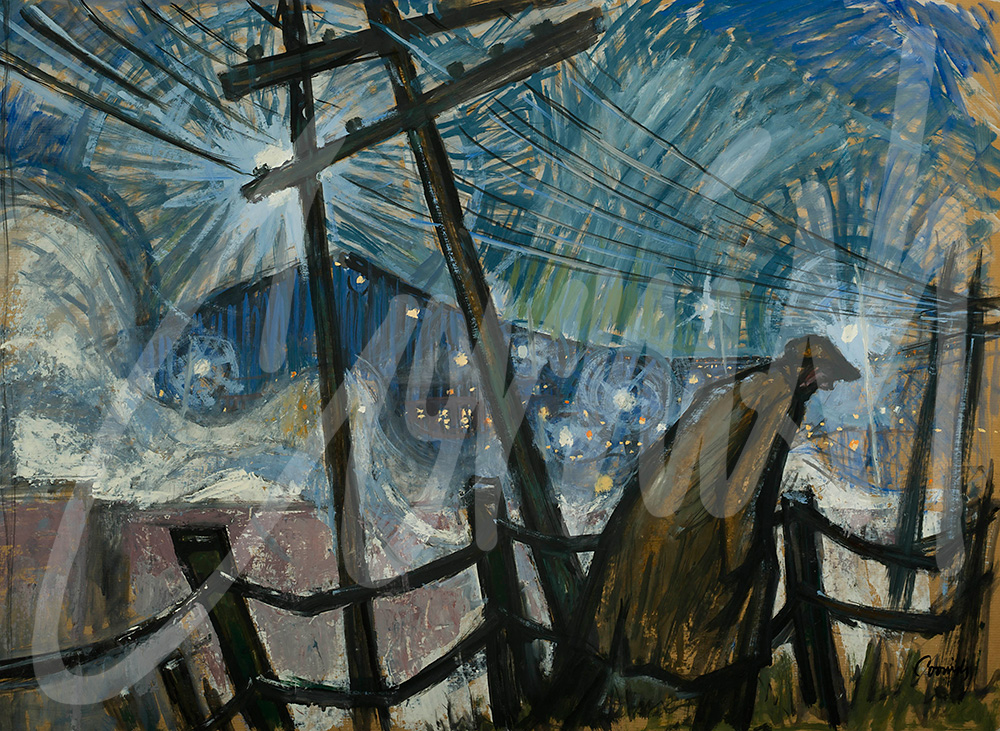
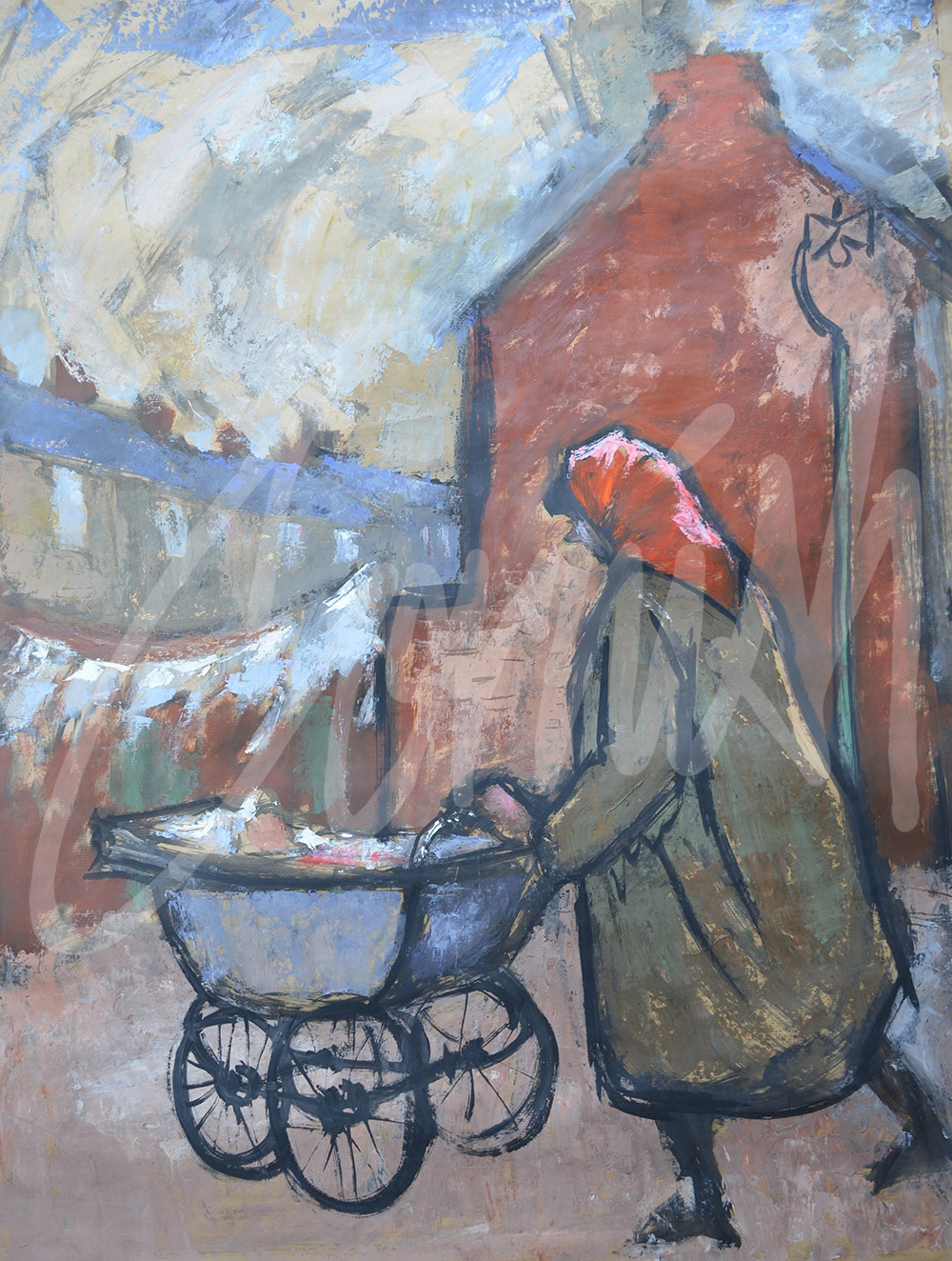
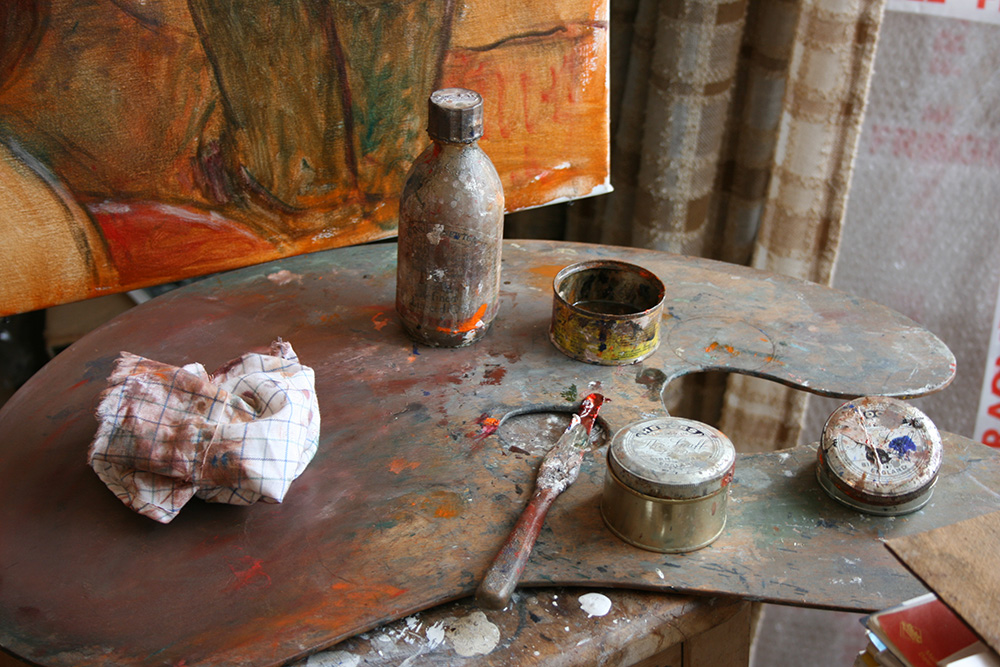

More Articles...
- Behind The Scenes: Berriman’s Chip Van
- The Gantry: Part 2
- The Gantry: Part 1
- Behind The Scenes: The Norman Cornish Centenary’ lecture 1919-2019
- Behind The Scenes: The Bridge at Sunnybrow
- Behind The Scenes: The Bridge at Sunnybrow (2)
- The Crowded Bar
- The Pony Putter
- A Slice of Life
- The Local Collieries


